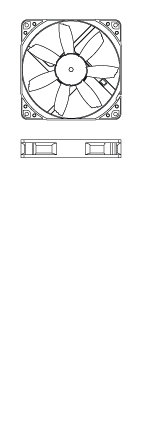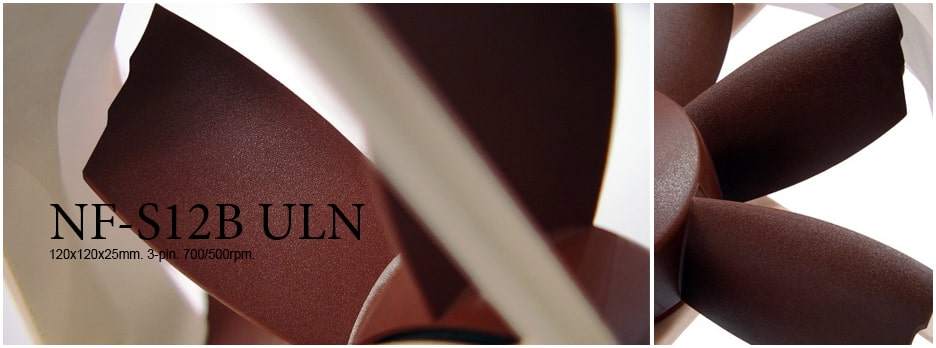NF-S12B ULN
Fuera de producción. Modelo sucesorio:NF-S12A ULN
Sucesor del exitosísimo NF-S12, el NF-S12B es un silencioso ventilador de última generación dotado de la tecnología avanzada SCD de Noctua, así como una geometría de aspas altamente optimizada con extremos biselados que mejoran la eficiencia en cuanto a flujo de aire de su predecesor en hasta un 10 %. Dotado además del rodamiento SSO de Noctua, de probado rendimiento, seis años de garantía y ajustes de velocidad de 700/500 RPM, el NF-S12B ULN es un ventilador de alta calidad para aplicaciones de nivel sonoro ultrarreducido, donde el silencio es de máxima prioridad.
Más informaciones:
 Diseño de aspas del NF-S12B
Diseño de aspas del NF-S12B
 NF-S12B & NF-P12: Características técnicas
NF-S12B & NF-P12: Características técnicas
 Qué ventilador es adecuado para mí?
Qué ventilador es adecuado para mí?
Más informaciones:
 Diseño de aspas del NF-S12B
Diseño de aspas del NF-S12B NF-S12B & NF-P12: Características técnicas
NF-S12B & NF-P12: Características técnicas Qué ventilador es adecuado para mí?
Qué ventilador es adecuado para mí?/

Details

Impulsor altamente optimizado con puntas biseladas
Gracias a una geometría de aspas mejorada con bordes exteriores extendidos y puntas de aspa biseladas, el NF-S12B logra hasta un 10% más de flujo de aire y presión estática que su ya aclamado predecesor con un nivel sonoro similar.

2 configuraciones de velocidad para el máximo silencio
Con configuraciones de velocidad a 700 y 500 RPM a través del adaptador incluido, la versión ULN (Ultra-Low-Noise o Sonido Ultrarreducido) se adapta perfectamente a los más entusiastas del silencio, que requieren velocidades de funcionamiento muy bajas y el mayor nivel de silencio operacional.

Smooth Commutation Drive 2
La última versión del avanzado sistema SCD de Noctua asegura una mayor uniformidad en el funcionamiento eliminando las variaciones de torsión y los ruidos de intercambio.

Rodamientos SSO-Bearing
La tecnología de rodamientos SSO-Bearing de Noctua, de probado rendimiento, se ha convertido en sinónimo de un funcionamiento increíblemente silencioso y una excepcional estabilidad a largo plazo.

Especificaciones ventilador
Dimensiones
120x120x25 mm
Rodamiento
Geometría de las aspas
Velocidad de rotación (+/-10%)
700 RPM
Velocidad de rotación con U.L.N.A. (+/-10%)
500 RPM
38,2 m³/h
Sonoridad
6,8* dB(A)
Presión estático
0,44 mm H₂O
Presión estático con U.L.N.A.
0,23 mm H₂O
MTTF
> 150.000 h
Volumen de entrega
- Ultra-Low-Noise Adaptor (U.L.N.A.)
- 4 Vibration Compensators
- Adaptador 3-4 pines
- 4 tornillos
6 años


Your opinion matters!
We are excited to invite you to participate in our short website survey. It will only take 5 minutes of your time!










